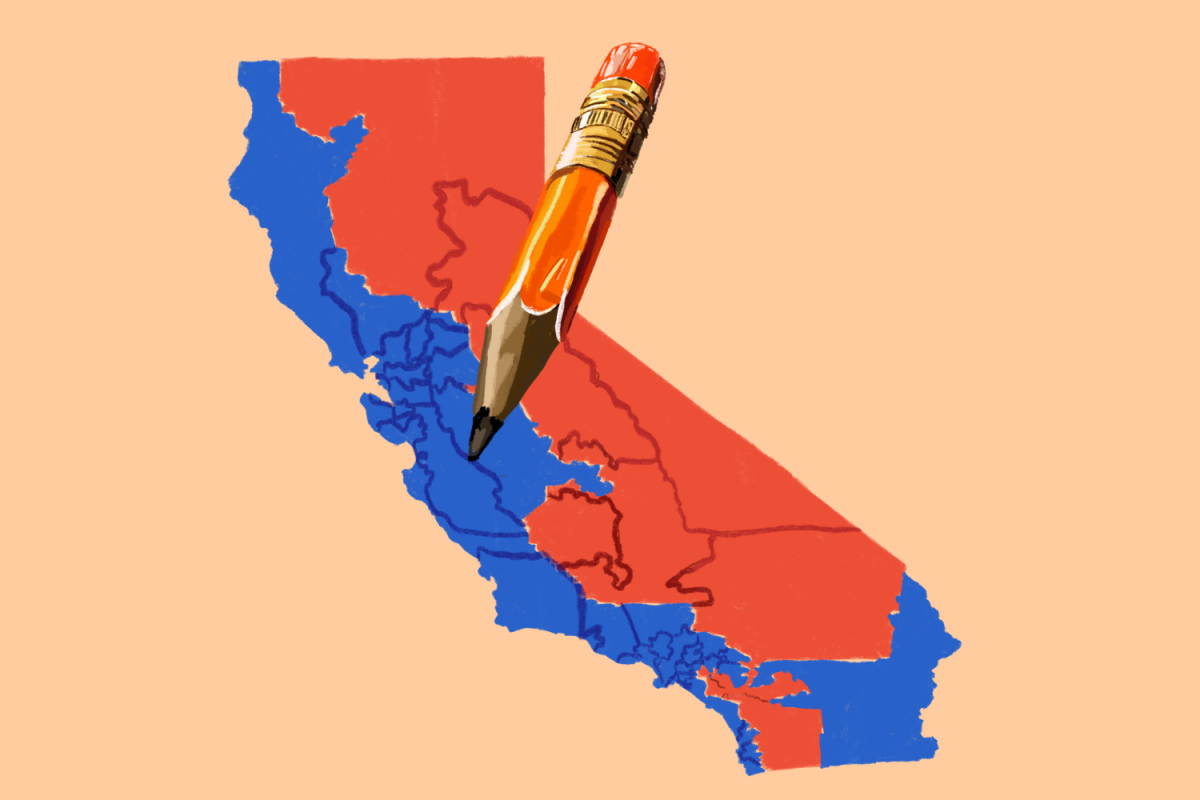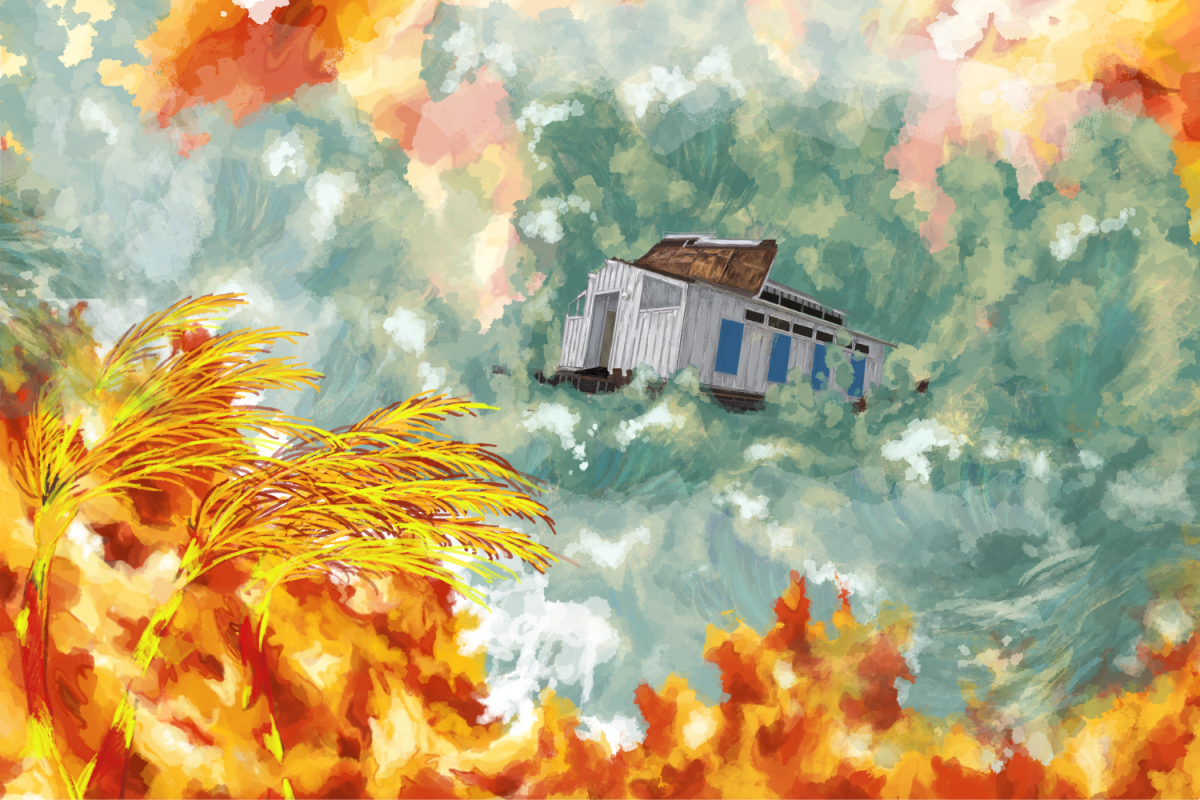Natural disasters like wildfires, floods and coastal disasters are extreme events that change and disrupt the California landscape. Due to climate change, these events are becoming more frequent and severe, heavily driven by changing weather systems and rising temperatures. According to the California Climate Adaptation Strategy, California experienced four of the 20 largest wildfires in its history, with over 2.5 million acres burned across the state.
2020 California Complex Lightning Fires
In August 2020, California experienced a series of lightning fires throughout many Northern California counties, including Napa, Santa Clara, San Mateo and Santa Cruz. While these fires could have been caused by human disruption in natural surroundings, researchers have shown that the root of these fires and many other California fires stem from increased temperatures and dry climate in the already drought-prone environment of California.
Stress on vegetation due to a prolonged drought, lasting from 2012 to 2016 and returning in 2020, led to many crops becoming increasingly dry and flammable, thus making them susceptible to major burnings. Additionally, high temperatures in California caused an expanding amount of dry lightning storms in the Pacific Coastal Mountains surrounding Santa Cruz county, leading to hundreds of fires spreading throughout Northern Californian counties to combine.
The effects of the 2020 fires are still prevalent today, one of the most notable being the housing crisis.
Due to the San Mateo–Santa Cruz Unit, CZU, Lightning Complex fire — one of the three major fires — nearly 700 homes were destroyed in Santa Cruz County. According to a report by the Santa Cruz Civil Grand Jury, only around one-third of the homes were fully rebuilt four years later, pushing many previous homeowners into the homelessness crisis. With total economic damages estimated at nearly $10 billion, according to a report by ABC7 News, Santa Cruz County officials are still working toward restoring the Santa Cruz area by alleviating the homeless crisis and preventing any future economic hardships.
“There are many proposed conservation, preservation and environmental strategies that have been proposed,” San Jose environmental studies professor Rachel Lazzeri-Aerts said. “We need to use good scientific knowledge to determine the best actions related to environmental management.”
2023 California Atmospheric Floods
From Dec. 26, 2022, to Jan. 17, 2023, nine atmospheric river floods flushed into California, harming Southern, Central and Northern Californian counties. Initially, heavy rainfall and snowfall caused atmospheric rivers across the state to overflow, causing a downpour onto surrounding land and a narrow stream of water vapor, flooding the streets of nearby cities.
Atmospheric rivers are long, narrow sections of the Earth’s atmosphere carrying large amounts of water. They are created because water vapor in the sky mixes with the rising warm water and robust winds carry the vapor through the atmosphere, subsequently rising as it moves farther through land. While many areas of California are known to not have an abundance of heavy snow even during the winter, regions in Central California, such as Yosemite and Lake Tahoe, are surrounded by the Sierra Nevada region which typically has a surplus of snow due to mass rainfall.
A study by the Stanford Report suggests that the sudden disappearance and reappearance of major rivers throughout the state will harm the state’s natural vegetation. These impacts may make the anticipation and prediction of such disasters exponentially harder.
Over $3 billion worth of damage and losses were reported, and further studies showed that the mass floods generated three to four times more economic damage than each would have if they had individually struck the area. This stems from deeply water-saturated soil soaking and elevated flood risks in the area, forcing residents to relocate to places farther away.
Despite the floods’ lasting effects on the California droughts and vegetation, researchers and professors of environmental studies have found positive outlooks after analyzing the economic and environmental details of mass floods like this. California officials will be able to quantify the total economic damage and make quicker and easier decisions ahead of floods and storms to inform the public.
2024 Santa Cruz Wharf Collapse
In December 2024, a 150-foot segment of the Santa Cruz Wharf collapsed into the Pacific Ocean. This event was triggered by increasingly harsh weather conditions and the wharf’s deteriorating structure due to deferred maintenance. The collapse occurred during an unusual period of high waves — heights reaching over 19 feet. The Wharf collapse underscores the effect of climate change on local communities, showing how extreme weather events are increasingly affecting familiar places.
Increased ocean swells, long waves generated by wind over long distances, amplified the conditions. These swells are a direct cause of climate change, which has been linked to their increased intensity and frequency. These waves now occur more regularly and compromise coastal infrastructure when combined with stronger winds. Rising ocean temperatures have intensified storms, causing swelling and flooding in the California coast, stressing structures like the wharf. Increased carbon dioxide levels in the atmosphere have led to ocean acidification, a process in which seawater becomes more acidic due to excess carbon dioxide being absorbed from the atmosphere, reducing its pH. This increased acidity degrades materials like wood, concrete and steel.
Another direct cause of increasing rainfall in Santa Cruz has been mudslides. This has led to more frequent infrastructure disruptions and more dangerous roads for commuters.
“The recent mudslides have made it so that the trees on the sides of the roads and highways are unstable and fall, blocking roads,” English teacher Maggie Welsh said. “I’ve been commuting for 20 years and never seen anything like that.”
The rise in aggressive ocean conditions and extreme weather events have created a growing risk for coastal communities and infrastructure. Authorities keep the public informed with emergency alerts and official updates to ensure that residents are aware of any anticipated evacuation notices. Santa Cruz provided sandbag stations for the community in the case of flooding and had crews working to clear storm drains to reduce the likelihood of blockages. The efforts of Santa Cruz authorities and volunteers aim to minimize the damage that heavy rainfall and natural disasters bring. As climate change continues to drive extreme weather events, coastal communities can expect more severe and frequent flooding, stronger storms and higher tides across California. These conditions could lead to more serious coastal erosion and cause damage to existing infrastructure.
2025 Palisades Fires
On Jan. 7, the Palisades Fire ignited in the Pacific Palisade Hills, one of the most affluent neighborhoods in Los Angeles, Calif. Aided by the extreme Santa Ana winds and an unusually dry October, the fire spread quickly, rapidly engulfing thousands of acres of land within days of its start. The Eaton Fire in Altadena destroyed a historic Black community, erasing its rich heritage and historical landmarks. Mandatory evacuation was issued for those in the Pacific Palisades and certain areas of Malibu. As the week went on, the fire had burned over 24,000 acres of land, making it one of the most destructive wildfires in the history of Los Angeles County. With hundreds suffering from injuries that ranged from burns and smoke inhalation, over 200,000 residents were forced to leave their homes as professionals struggled to control the damage of the fire.
With winds reaching up to 55 miles per hour, the Palisades fire spread quickly and efficiently, burning everything in its path. Warmer ocean temperatures and changing atmospheric systems contribute to more intense wind events in places like Southern California. These winds, commonly known as the Santa Ana winds, have become increasingly strong due to rising temperatures. Pressure systems that drive the winds have intensified immensely, increasing the speed of the winds.
Climate change has contributed to the increased frequency and intensity of extreme dry spells, which dry out vegetation and create ideal conditions for wildfires to spread. The relentless dry season has left vegetation highly flammable and brittle, creating fuel that worsens advancing flames. The increased temperatures and prolonged droughts only intensify these conditions, making wildfires more difficult to contain and more likely to start. The Environmental Defense Fund warns that unless significant policies are made to contain the present damage of climate risks, wildfires and extreme natural disasters of this nature will become more frequent. According to the Center for Climate and Energy Solutions, a one-degree Celsius increase in the average annual temperature can lead to a median increase of 600% in the area burned by wildfires.




































































